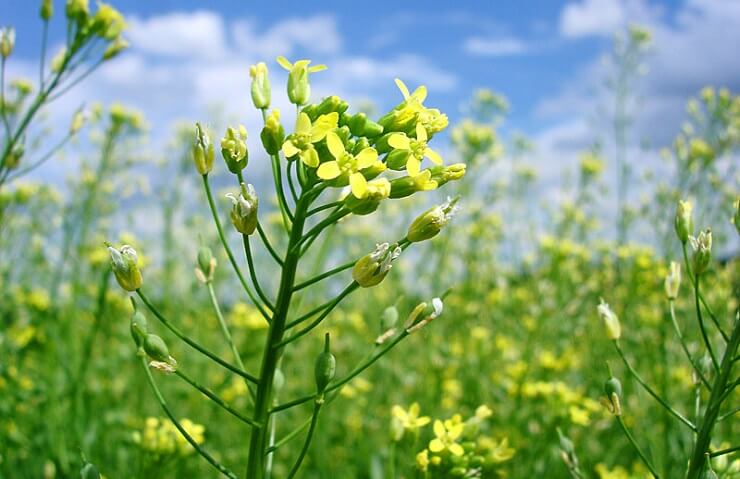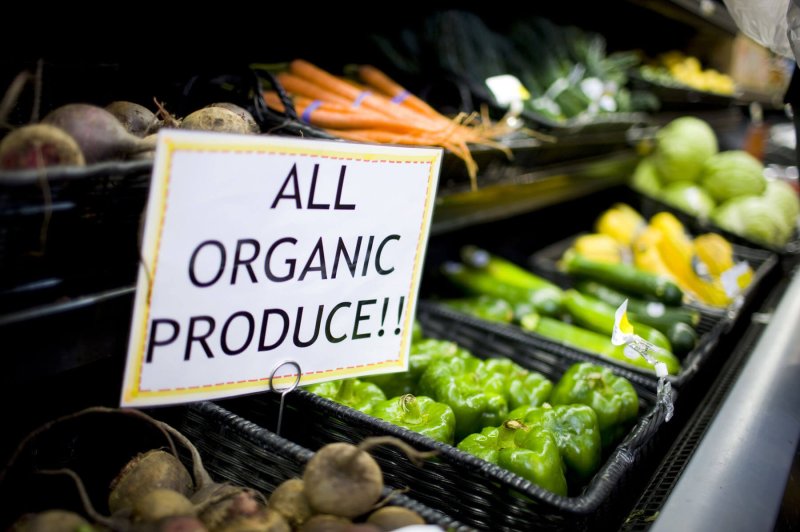The rapid advance of technology has enriched our daily lives. We can take pictures and videos with a cell phone, we can surf the internet, organs can be transplanted, genetic engineering can be utilized to develop vaccines, while windmills and solar panels are altering the way we generate electricity, 5G will revolutionize telecommunications, streaming services allow us to watch movies in our own homes and robots and artificial intelligence are changing the workplace.
There is only one group that rejects the onrush of modernity and technology and that is the organic community of farmers, processors, retailers and marketers (as well as their lobbying organizations), which believes the old ways are the better ways and wishes to turn back the clock to a supposedly idyllic time where small family farms proliferated and produced most of the food we consumed.
Farming has always been a very difficult business, particularly given the vagaries of the weather and crop prices. But it has only been through the application of science and new technologies that farmers have been able to steadily increase productivity and produce more food at a time when the number of people engaged in farming has plunged. This is one of the major reasons organic farming is less productive than “conventional” farming. It rejects the application of new innovative technologies such as biotechnology which has allowed the expansion of food production.
Many proponents of organic farming even reject hydroponics–crops grown solely in water–because they are not grown in soil. In May 2021, the Center for Food Safety and a group of organic farmers appealed a court ruling that the USDA did not act unreasonably when it refused to prohibit the organic certification of hydroponic agriculture. They claimed the USDA is in violation of the Organic Foods Production Act because hydroponic agriculture “undermines the law’s stipulation that organic farming enhance soil fertility.”
There is no reason why organic farming cannot adopt modern biotechnology methods other than stubborn adherence to “orthodoxy,” which in the long run will undermine the entire industry. This is because organic farming will not be able to compete with the crops that will be grown via genetic engineering, which hold out the promise of creating crops that are insect, browning and drought resistant, make their own nitrogen, are more nutritious, colorful and tastier and have a longer shelf life. These crops can only be created in the laboratory and not through conventional breeding methods.
New unconventional plants out of reach of organic farming
Pairwise, a biotechnology agriculture company, based in North Carolina, is working on developing via genetic engineering seedless blackberries, pit less cherries and tastier greens.
Calyxt, headquartered in Minnesota, has developed a gene-edited soybean oil that contains approximately 80 percent oleic acid and up to 20 percent less saturated fatty acids compared to commodity soybean oil, as well as zero grams of trans fat per serving.
In 2019, Cibus, another agriculture biotechnology company, headquartered in California, developed via gene-editing three new traits for canola that can increase crop yields and reduce harmful environmental impacts. According to a company press release:
“The new traits precisely edit the canola genome to reduce pod shatter, the tendency of canola seed pods to open pre-harvest that can reduce yields by as much 40 percent, build resistance to Sclerotinia, a disease called white mold, that can reduce yields by as much as 50 percent, and introduce an improved weed control system, as competition with weeds for nutrients and sunlight can reduce yield of canola.”
The Camelina plant has been genetically modified to produce omega-3 which are normally sourced from fish oil. This development might help to ease overfishing.

Genetic engineering will be able to produce disease resistant crops by manipulating the genetic make-up of plants. The papaya industry in Hawaii was saved from being decimated by ringspot virus by a genetically modified variety that is resistant to the virus. CRISPR/Cas 9 technology has been used to confer late blight resistance to potatoes. Genetic engineering may be the only means of saving the Cavendish banana from being decimated by Panama disease and oranges from citrus greening.
An article in the Phytologist journal entitled, “Genetic modification to improve disease resistant crops, noted:
“Plant pathogens are a significant challenge in agriculture despite our best efforts to combat them. One of the most effective and sustainable ways to manage plant pathogens is to use genetic modification (GM) and genome editing… expanding the breeder’s toolkit.”
Genetic engineered solutions to the scourge of crop diseases that cost farmers billions of dollars of losses would not be available to organic farmers because of the rejection of the use biotechnology in cultivating their crops.
Genetic engineering for livestock that organic can’t use
Organic farmers will also not be able to avail themselves of using animals for dairy and meat that have received genetically engineered vaccines. About 20 percent of cows and other livestock are lost to disease every year.
A 1988 article from Critical Reviews in Microbiology that could now be considered a classic entitled, “New approaches to animal vaccines utilizing genetic engineering”, stated:
Control of infectious diseases in livestock is an important determinant in the success of a nation’s effort to efficiently meet its need for animal products. Genetic engineering offers many new options in the design of animal vaccines. Monoclonal antibodies, DNA cloning, recombination, and transfection are examples of techniques that facilitate innovative strategies in antigen identification, production, and delivery.
The organic industry will also not be able to take advantage of using animals that have been genetically engineered to be heat tolerate, grow faster like the GMO salmon, and develop more muscle mass.
In December, 2020, the Food and Drug Administration approved genetically engineered pigs for use in food and medical products. The pigs, developed by Virginia-based Revivicor, can be used in the production of drugs, to provide organs and tissues for transplants, and to produce meat that’s safe to eat for people with meat allergies.

Meanwhile, a Japanese company is selling a genetically engineered red sea bream that has 20 to 60 percent more meat and whose feed utilization efficiency is 14 percent greater than conventionally grown bream.
In a world in which plant-based “meat” will garner a growing share of the meat market, the organic good industry will not be able to fully participate in providing basic ingredients, such as soybeans, potatoes and peas, because many of the processes involved in creating such “meat” use genetic engineering. Impossible Burger, for instance, uses GMO technology to create a soy-based heme which makes its burgers bleed.
An article by IDTechEx Senior Technology Analyst Michael Dent, “Emerging Technologies Set to Shape Next Generation of Plant Based Meat,” noted:
Genetic engineering technology has great potential for producing new proteins and allowing animal-free production of ingredients usually derived from animals. Perfect Day is using recombinant technology…to create vegan dairy products that contain the exact same proteins as their animal-derived counterparts, creating realistic tastes and textures. Clara Foods is taking a similar route, using genetically engineered yeast to produce vegan egg white proteins. Beyond this, genetic engineering technologies such as CRISPR and TALEN could help create crops optimized for plant-based meat production, such as increased protein content, fewer off-flavors, or boosted nutritional profiles.
The organic food industry remains steadfastly opposed to the use any form of genetic engineering to grow crops. In 2019, for example when U.S. Department of Agriculture undersecretary Greg Ibach suggested that gene-editing should be considered for use in organic food production, The Organic Trade Association issued a statement that said it “maintains its long-held position that any gene-editing techniques not be allowed in organic production.” Harriet Behar, the chair of the National Organic Standards Board (NOSB) chair, said,
We’ve made it very clear, and the organic community has public comment that gene-editing and CRISPR should be an excluded method…The organic community works with natural systems, and we don’t feel the need for this type of genetic engineering.
Despite the long-held and vigorous opposition to genetic engineering, the organic food industry may ultimately have to reassess its position or else it will be digging itself into a grave of obsolesce. Prices for organic food are already much higher than for conventionally grown food. As a result, it has only been able to capture a small percentage of the food market. According to the Organic Trade Association, “nearly 6% of all food sold was certified organic” in 2020. One of the reasons for the higher costs is the low productivity of organic farming.
A plethora of crops developed by means of genetic engineering will come to the market in the near future that are nutritional, taste and color enhanced, drought tolerant and browning and disease resistant, all of which organic produce will not be able to compete with. The organic food industry needs to set aside its orthodoxy and its devotion to dogma against genetic engineering or else it will never break out of the small niche share it has in the food market and might even slip into irrelevance.
Steven E. Cerier is an international economist and a frequent contributor to the Genetic Literacy Project.































